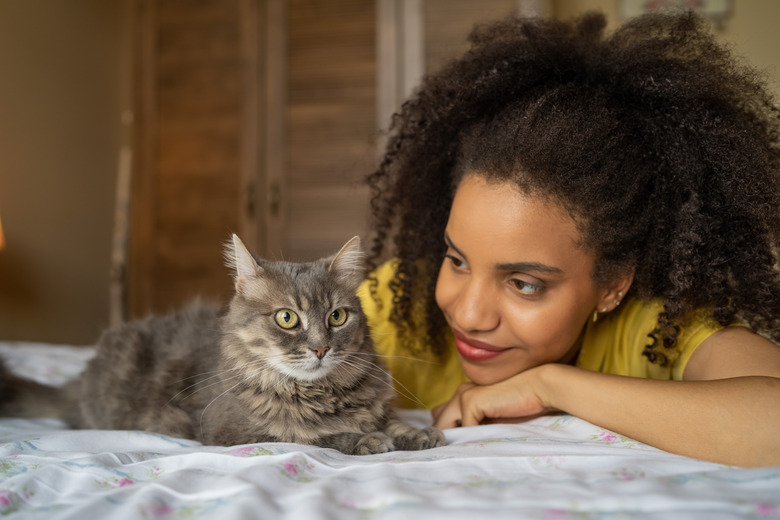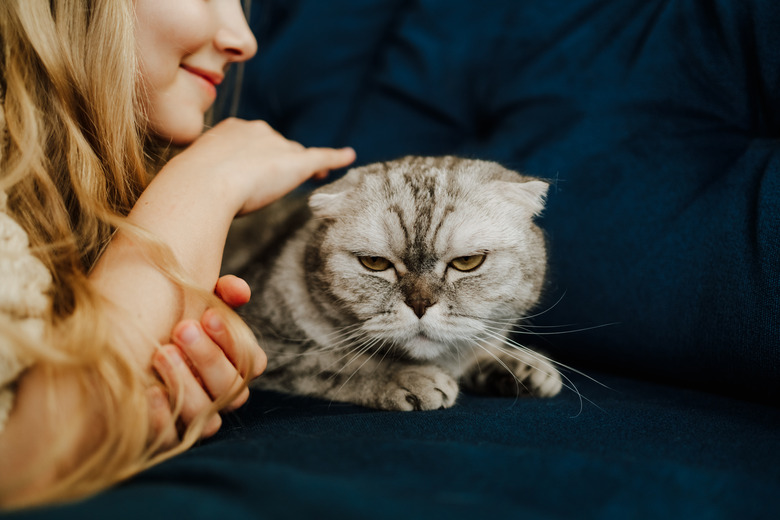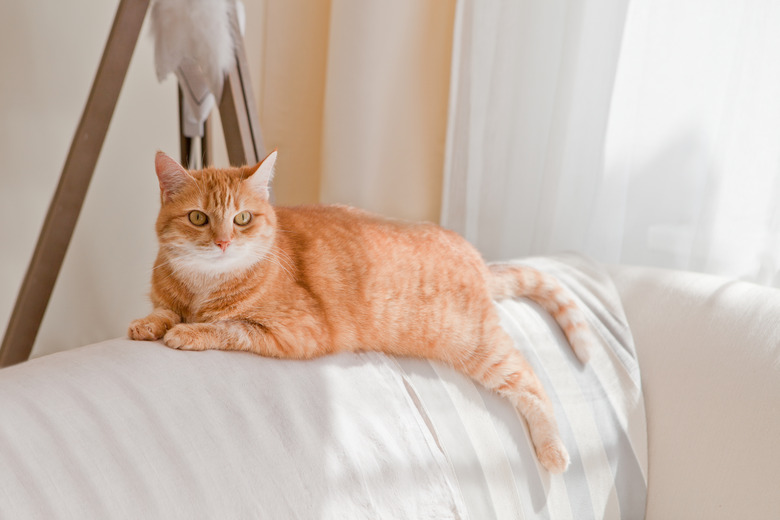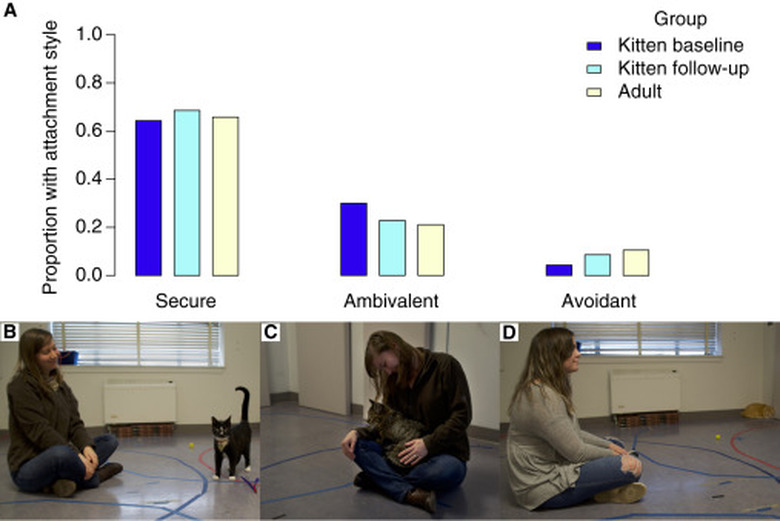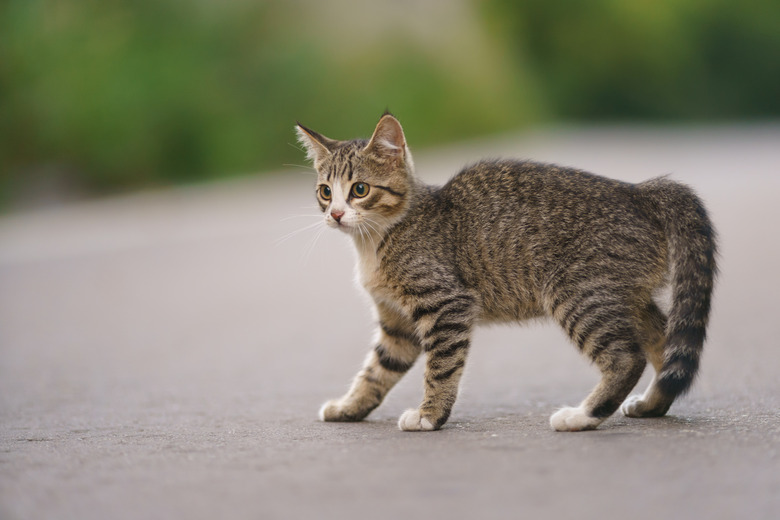Cat Attachment Style: Cats Form Attachment Bonds Like Babies And Dogs
You've probably heard about attachment styles in human relationships, especially in regard to romantic ones. But do you know that cats and dogs also have distinct attachment styles? Not only do our domestic pets have attachment styles with others in their own species, but they also have them with members of other species, including us humans! Dog attachment styles have been studied quite a bit, but cat research is more limited. A 2019 study published in Current Biology by Kristyn Vitale took a look at cat attachment styles and found some surprising evidence that says a lot about their relationships with their human caregivers.
What is attachment theory?
What is attachment theory?
According to Psychology Today, attachment is an emotional bond between two people. Our styles of attachment, which include insecure attachment, and secure attachment, develop in infancy during our early interactions with parents or caregivers. These are the first coping mechanisms we form in life that help us separate from our caregivers without causing us major distress. Cats also form attachment styles in infancy. Because cats are usually separated from their mothers at just a few weeks old, they will often develop an attachment to the human caregivers who raise them.
In this study, researchers from Oregon State University examined 70, 3- to 8-month-old kittens (aww!) and classified them by attachment styles using the same method used to classify human children. The majority of cats (64%) of the kittens, displayed secure attachment, and 35.7% displayed insecure attachment. Then they exposed them to their owners for two minutes, separated them for two minutes, and reunited them for two minutes to see how they would respond.
Insecure attachment style in cats
Insecure attachment style in cats
The insecurely attached kittens were further classified into insecure style groups, and 84% of them displayed ambivalent attachment (more commonly known as "anxious attachment,") 12% displayed avoidant attachment, and 4% displayed disorganized attachment (fearful). Of these kittens, a portion was enrolled in a six-week training and socialization course with their caretakers just so researchers could see if socialization affected their attachment behaviors. What they found was that 81% of the kittens who took the socialization training course displayed the same attachment style as they did before the course.
This suggests that regardless of socialization or training even weeks or months after an attachment style has formed won't really make a change to that style once it's already been formed.
Secure attachment style in cats
Secure attachment style in cats
The securely attached kittens also showed little change to their initial attachment style after completing the training and socialization course. Because of this, the study suggests that traits inherited by their parents, like their temperament, may have more to do with a cat's attachment style than their environment, or at least, can contribute to it. This study shows that the ability of domestic cats to form attachment bonds with human caretakers is the same as that of babies and dogs.
Signs of secure attachment in cats
Signs of secure attachment in cats
If you assumed that securely attached cats just sat there, cool as a cucumber throughout the study, you'll be surprised to learn that they also showed signs of distress! In a new study conducted by the same research team, adult cats aged over one year old were given a different kind of test to measure attachment styles. Rather than have their human companions return, this study exposed the cats to various stressful events, then measured some examples of common cat behavior, namely, their vocal reactions.
The secure cats actually vocalized just as much as the ambivalent cats from the insecure group! The frequency of their meows was not necessarily the same, but both the secure and insecure-ambivalent cats vocalized, while the avoidant and disorganized cats did not.
The secure kittens from the initial study, as well as the adults from the second study, could be seen walking toward and away from their caretaker without a sense of urgency either way — they just seemed pretty relaxed, did their own thing without going out of their way to avoid their caretaker, and were pretty much just "in the moment," if you will.
Signs of insecure attachment in cats
Signs of insecure attachment in cats
So, how did the other insecurely attached kittens respond? The significant differences are that insecure avoidant cats jumped in their caretakers' laps when they returned and just didn't seem to want to leave their sides. The insecure-avoidant kittens did just that — they avoided their caretakers and hid out in a corner of the room for several minutes before coming forward to approach their human friend.
How to promote secure attachment in cats
How to promote secure attachment in cats
The best way to promote attachment security in cats is to encourage gentle and appropriate human-animal interaction from an early age. In the same way that secure attachment is built among human infants, building a sense of trust, safety, and protection will go a long way in making your cat feel comfortable. Some feline friends respond to physical touch, especially after a stressful event or a strange situation while others just value your presence and accountability to them through a predictable routine, like feeding schedules. This doesn't guarantee security in all cats, but as this study finds, forming healthy attachments early on is the best way to try.
